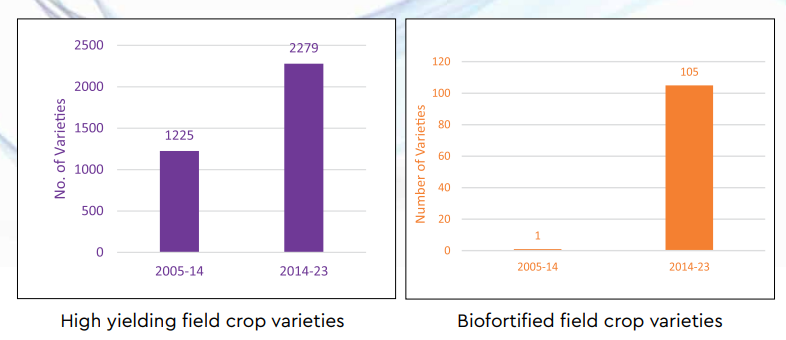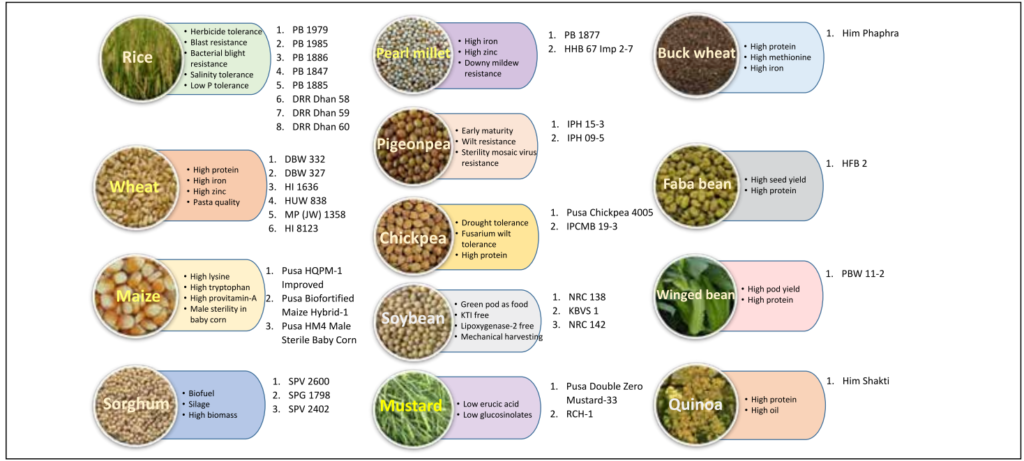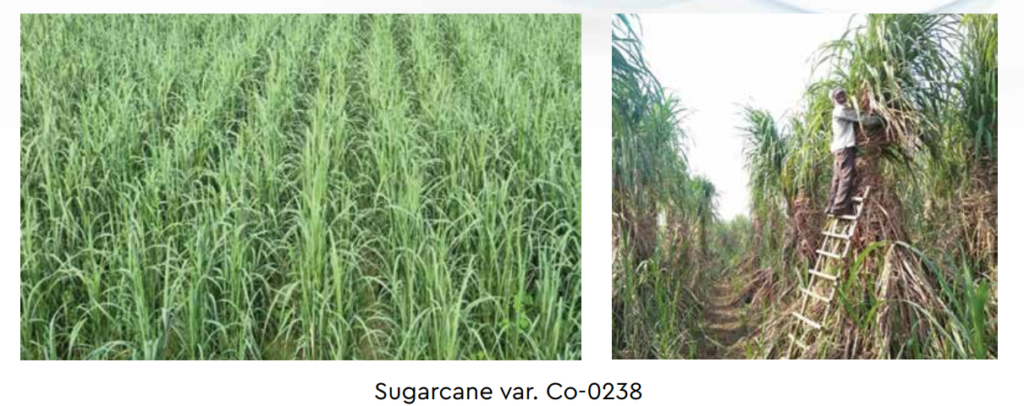Over the past decade, breakthroughs by India’s crop science research institutions have led to major advances in agriculture. New high yielding, disease resistant crop varieties have been introduced that can thrive in challenging climates. Special biofortified crops were developed to provide more nourishing food.

The revival of overlooked healthy grains called millets was promoted. All together, these innovations sparked record harvests and export earnings from signature crops like basmati rice and wheat.
Key Points
- From 2014-2023, ICAR released 2279 high yielding crop varieties, with 1888 being climate resilient.

- 105 biofortified crop varieties released with higher iron, zinc, protein, vitamin A, etc.
- ICAR is working towards making India a global hub for millet production. Promoted millets through startups, entrepreneurs, training, and International Year of Millets 2023.
- Increased supply of breeder seeds by 20% from 2014-2023, enhancing seed replacement and varietal replacement rates.
- Record pulse production from 2014-2023 due to improved varieties, breeder seed production, seed hubs, and demonstrations.
| Crop | Variety | Benefit |
|---|---|---|
| Basmati Rice | Pusa Basmati 1121, 1509 | Higher yield raised export value to Rs 30,000 crore/year |
| Wheat | HD 2967, HD 3086 | Better wheat export earnings of Rs 6,000 crore/year |
| Sugarcane | CO-0238 | Sugar recovery boost enabled sugar exports of Rs 11,297 crore |
- Sugar revolution from variety Co-0238 which spread rapidly in UP – 20 t/ha higher yield and 2% more sugar recovery.

- Non-transgenic herbicide-tolerant Basmati rice varieties have been developed for direct-seeded rice cultivation.
- Genome editing used to develop salt and drought tolerant rice variety with higher yield.
Integrated Pest Management (IPM) Cuts Losses
- New IPM techniques developed that combine ecological, genetic and chemical approaches to curb crop losses yet limit pesticide use.
- 28 IPM packages formulated for key crops in 2014-2023 period, up from just 16 in prior decade.
- IPM adoption shown to lift yields by 20-40% and cut pesticide application over 30% .







🎓 Student Discussion
Share your questions and insights with the community!
Loading discussion...